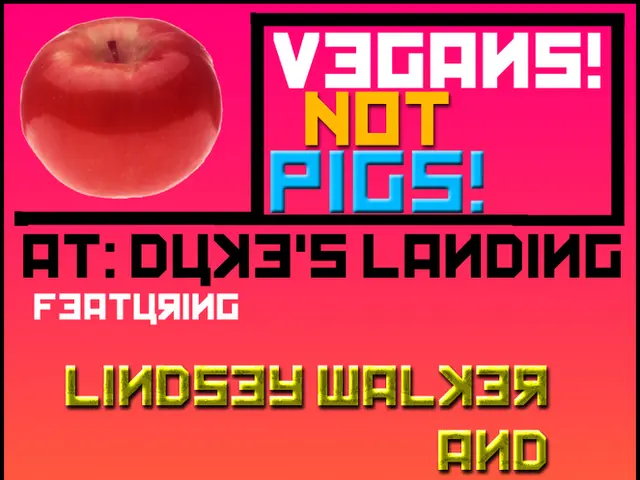Unlocking Modern Search Optimization: Mastering Search Everywhere
Optimizing Search Everywhere: Strategies for Achieving Immediate online Visibility
Tired of focusing just on Google for your SEO efforts? It's high time to expand your horizons and harness the power of Search Everywhere Optimization!
Nowadays, people aren't just searching for answers on Google. They're hunting for recommendations on TikTok, seeking advice on Reddit, and absorbing knowledge on YouTube - all while engaging with AI assistants like ChatGPT. In this guide, you'll learn what Search Everywhere Optimization is, why it's important, and how to make sure your brand shines wherever buying decisions happen.
Let’s dive right in!
What is Search Everywhere Optimization?
Search Everywhere Optimization is a cutting-edge approach to visibility that surpasses traditional SEO. It centers around the idea that search behavior no longer happens within a single platform. Users search for product reviews on YouTube, tutorials on TikTok, advice on Reddit, and expert insights on LinkedIn. They might even ask ChatGPT for briefings and recommendations!
In essence, this strategy aims to build a presence where people truly make decisions – not just where algorithms reign. That means optimizing across multiple ecosystems, each with their own formats, keywords, and engagement signals. It's about more than snapping a blog post and pasting it everywhere; it's about crafting messages tailored to fit each platform's language and context. A how-to guide, for instance, might work fantastically on a blog, while the same message needs to be short, visually appealing, and engaging for TikTok, discussion-centric for Reddit, and centered around visuals for Instagram.
The key takeaway? Embrace Search Everywhere Optimization to stay relevant and found where decisions are actually being made!
Where People are Searching Today
Users flit between apps and tools depending on their question, context, and whom they trust. Here are the platforms driving search attention today and tips for positioning your brand within each unique ecosystem.
TikTok:
This platform has become a popular go-to destination, especially for younger generations. People hunt for product reviews, quick tutorials, and honest opinions, often favoring influencers over traditional advertisements. A Wave Wyld study indicates that 74% of Gen Z internet users utilize TikTok for searches, with 51% preferring it over Google, mainly due to its video-centric format.
To get noticed on TikTok, you need bite-sized video content that answers real queries, like product "how-to's," comparisons, or short explainers with captions and context integrated into your voiceovers. The TikTok algorithm rewards relevance and watch time, so authenticity trumps perfection.
Instagram:
Instagram has evolved past visuals to a hybrid search tool. Users search for products, local recommendations, tutorials, and niche content using tags, keywords, and location labels. With over 2 billion users monthly in 2024, and 44% using it regularly for shopping, Instagram can drive conversions. Its Explore page, Reels feed, and even DMs are powerful but informal ways to find what users are looking for, especially in lifestyle, fashion, food, and wellness niches.
To optimize for Instagram, your content must offer a balance of stunning visuals with keyword-rich captions. Reels are favored by the algorithm and often surface in search without followers, making them ideal real estate. Tap into the potential of hashtags, alt text, and consistent engagement to help your posts show up where they matter.
Reddit:
Reddit serves as the digital watercooler where people openly ask – and honestly answer – questions. It is a hub for early research, niche advice, and real-user experiences. Subreddits often rank on Google, but native Reddit search can reveal more nuanced insights that may influence purchasing behavior before users proceed.
Kickstart your Reddit success by joining relevant communities, providing valuable insights, and getting involved in discussions. Build your reputation by sharing helpful resources, answering questions, and linking only when it's necessary rather than being promotional. Optimize your profile for clarity and stay true to the platform's trust-based environment.
Amazon:
Who knew Amazon's search bar wasn't just for shopping? Customers flock here to peruse reviews, compare similar products, and make informed decisions. With fierce competition, your visibility translates directly into conversions and sales. Optimizing for Amazon search means going beyond keywords. Spruce up titles, bullet points, and backend terms, but don't forget about powerful visuals, demo videos, and crafting a stellar review strategy. Each element of your Amazon listing, from A+ content to Q&A sections, influences trust and ranking.
YouTube:
YouTube has evolved into the second-largest search engine, serving as both a content hub and a discovery platform. Viewers turn to it for solving problems, comparing products, learning new skills, and evaluating services through videos. With over 2.7 billion users globally in January 2024, YouTube is a vital touchpoint for content-based brand discovery.
To optimize for YouTube search, create content that directly addresses high-intent queries. Focus on titles that mirror search language, descriptions with context and keywords, and videos that deliver value early. Watch time, engagement, and consistency are pivotal indicators that the algorithm pays attention to.
LinkedIn:
transformed into a go-to source for content, expert evaluation, and real-life networking. It counts over 1 billion users globally in 2024, making it crucial, especially within B2B and high-trust industries.
Optimize your LinkedIn presence by polishing your profile, filling out key sections with specific keywords, engaging consistently, and sharing relevant content. No one likes a spammy salesperson, so provide value first before promoting your brand. Remember, LinkedIn is a trust-based platform, not just another content dropzone.
Pinterest:
Pinterest is the platform where intent meets inspiration. Users come intending to plan, start a project, or organize their vision, making it vital for early-stage decision-making. It's particularly powerful in lifestyle, food, fashion, home, and event-based categories. With 498 million users monthly in January 2024, Pinterest offers a visual search engine for planning purchases.
To optimize for Pinterest, create pins that double as search assets. Infuse strong visuals with keyword-optimized descriptions and structured boards to help the algorithm (and users) discern exactly what your content offers. Pinterest rewards recency and relevance, so frequent activity counts.
ChatGPT:
ChatGPT is swiftly becoming a favored information source, with user numbers soaring (800 million weekly active users in May 2025, up from 400 million in February 2025). This surge highlights a shift in user behavior as more people turn to AI-driven platforms for quick, conversational answers.
The platform's ability to provide context-aware answers makes it valuable for helping users find accurate information quickly. ChatGPT integrates with various applications and continually updates, expanding its utility across various domains.
How to Build a Strong Presence Across the Right Channels
You don't need to conquer every platform – just be present where your audience actively searches. This section covers strategic decision-making, scalable output, and maintaining discoverability without exhaustion.
Choose Platforms Based on Search Behavior, Not Fads
Begin by discovering where your audience searches for answers, advice, or inspiration. Use tools like SparkToro, Similarweb, and your analytics to uncover which platforms drive the most engaged traffic. Resist the temptation to chase trends irrelevant to your product, niche, or customer journey.
Once you've pinpointed 2-3 primary channels, observe how search operates on each platform (e.g., favoring long-form content on LinkedIn, visuals on Instagram, or short-form videos on TikTok). Adjust your content format to suit each platform's native style while keeping your message consistent.
Craft a Minimum Viable Presence First
Don't race to publish copious amounts of content right away. Start by setting up complete, search-friendly profiles, and pump out 1-3 search-optimized posts aligned with platform-specific queries. Add a single strong call-to-action (CTA) or link back to your main hub to establish your presence. Track traffic and referral numbers to determine which platforms drive discoverability.
Dive into evergreen content that addresses high-intent queries, like "how-to" videos on YouTube, comparisons on Reddit, or curated boards on Pinterest. These pieces function as effortless, passive assets that continuously deliver visibility and traffic without constant publishing.
Repurpose Smartly, Not Mindlessly
Content can – and should – be adapted for other platforms without resorting to simple cut-and-paste approaches. Content that resonates on TikTok will bomb on LinkedIn, so adhere to the platform's language and culture while reusing your core message. Utilize templates, automation tools, and DEVON's process to streamline multi-format creation without sacrificing nuance.
Stay Consistent Without Overdoing It
Search optimization across multiple platforms doesn't equate to constant posting. It means maintaining a consistent presence and refreshing older content when necessary. Prioritize quality over quantity, and focus on updates and routine maintenance.
Platform insights combined with tools like HubSpot CRM can help you understand content effectiveness, audience behavior, and trends, enabling data-driven decisions without guessing. Happy optimizing!
- The strategy of Search Everywhere Optimization involves not only optimizing for search engines like Google but also tailoring content for social media platforms such as TikTok, Instagram, Reddit, and LinkedIn, as people are increasingly searching for answers, reviews, and advice on these sites.
- In the realm of entertainment, YouTube has evolved into the second-largest search engine, serving as a content hub and discovery platform. Users turn to YouTube for solving problems, comparing products, learning new skills, and making informed decisions, making it vital for content-based brand discovery and discovery optimization efforts.








